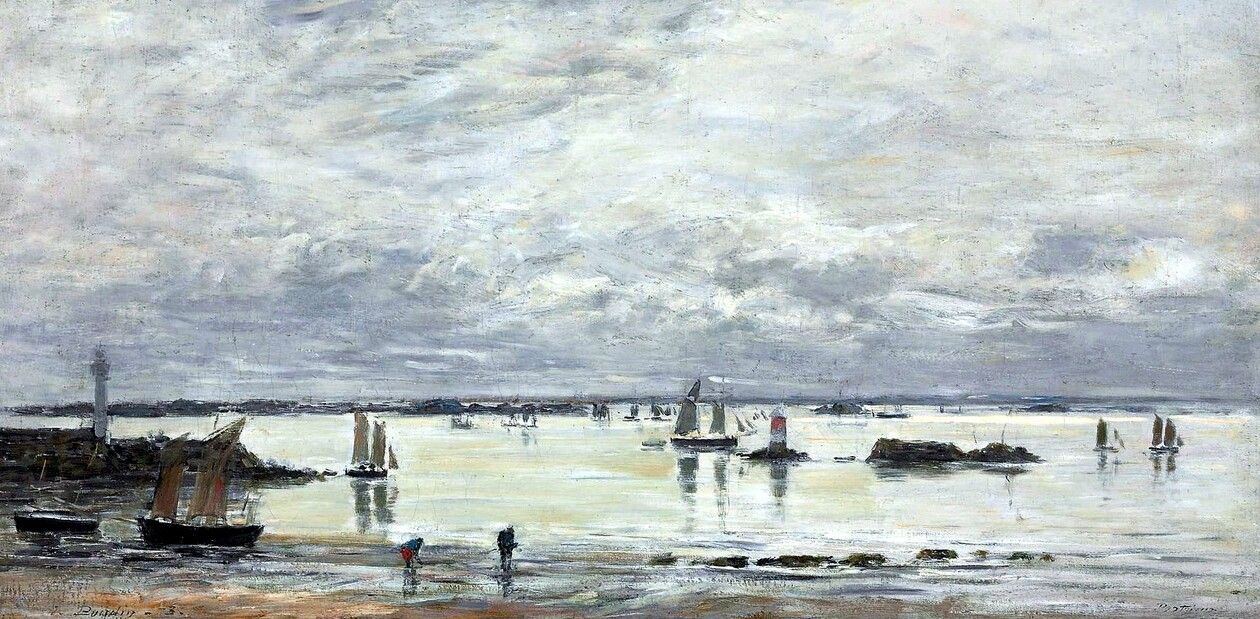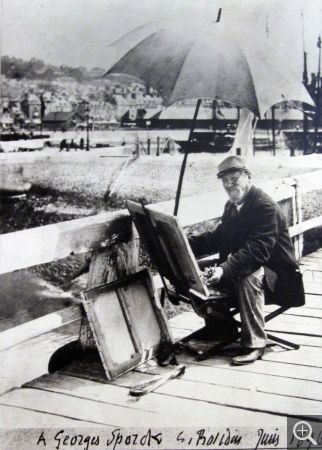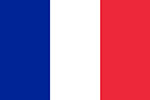Eugène Boudin – Artists and Brittany

Le Portrieux – Eugène Boudin – (collection particulière)
From the second half of the 19th century onwards, the development of the railways facilitated travel and seaside vacationing, and many artists were drawn to Brittany, seduced by the versatility of its light and the authenticity of its landscapes.
Painters left their studios to work on sketches outdoors, moving away from the academicism of bourgeois painting and the mythological themes in vogue. Techniques also evolved with the invention of color tubes in 1849, enabling artists to take their easels, canvases and palettes outdoors and work on the motif. Under their brushes, new techniques emerged, even pictorial revolutions that would shape the history of painting.
Brittany, renowned for its picturesque scenery, became a favorite stopover for painters, who found (especially in summer when studios were closed) an inexhaustible source of inspiration in drawing the shores, the sea, the skies, the lights or the everyday life of the inhabitants in ethnographic scenes of fishing, markets and pardons.
In this way, artists pushed their creative quest towards innovative outdoor research.
And so it was that generations of French and foreign painters, with more or less academic approaches, came to find inspiration in Armorican soil. These multiple and sometimes daring currents, such as Impressionism (a name given derisively in 1874 by a critic who discovered Monet’s painting Impressions Soleil Levant), Fauvism, the Pont-Aven school, Japonism, the Nabis, Naturalism and Cubism, were also reflected in Brittany, at the beginning of the 20th century, in a more identity-based approach, that of the Seiz Breur.
Eugène Boudin, the initiator

Eugène Boudin paved the way for the plein-air school of landscape painting, because he painted landscapes and reflections of light from the sky and sea “easel to the wind”, whatever the weather.
His influence on the evolution of painting was far-reaching, and he laid the foundations for a movement that turned art history on its head. He was the link between two schools of painting, Barbizon and Impressionism, which captured the infinite changes of time in a fleeting manner.
He discovered Brittany around 1855, visiting every summer until 1878, and then for the last time in 1897.
The young Claude Monet was a great admirer of Boudin’s compositions, whom he considered his master. Introduced to plein-air painting by his elder brother, Monet enjoyed Belle-Ile (1886), where he discovered “the unheard-of sea of tones”. He is recognized as the leader of Impressionism.

Rocher du lion, Belle-Ile – Claude Monet – Fitzwilliam Museum Cambridge
Auguste Renoir came to Saint-Briac several times, and Berthe Morisot visited Brittany several times, spending the summer at Portrieux in 1894. Degas stayed in Saint Malo in 1885.
Since 1884, when he met Seurat, Paul Signac had been pursuing his research into the division of light in the juxtaposition of colors. The painter-navigator stopped off at Saint Briac and Concarneau, sailed on the Trieux and then as far as Portrieux, where his boat and his admiration for Boudin took him.
In 1885, thanks to his friend Signac, Henri Rivière discovered the natural beauty of the Goëlo coast. An admirer of prints, he was a conduit for Japanese art. Stanislas Henri Rouart, an amateur painter close to the Impressionists, also proposed Breton subjects and financed his friends’ exhibitions.
From 1891, Paul Gauguin, Maxime Maufra, Henri Moret, Emile Bernard and others formed the Pont-Aven school.
Paul Sérusier and Maurice Denis, based in Perros-Guirec, founded the “Nabis” group in 1888.
Bernard Buffet lives regularly in Saint-Cast. His very personal vision and his love of Brittany are reflected here in an innovative rectilinear expression, avant-garde of other movements, Expressionism, Realism…
But the story doesn’t end there, and other painters will also come to capture the lights of our coasts. Some of these are listed on the page devoted to Paul Signac and Berthe Morisot.
At Le Portrieux, we are offered a privileged encounter with artists whose signatures are famous the world over and whose paintings hang on the walls of major museums: Eugène Boudin, Paul Signac and Berthe Morisot.
